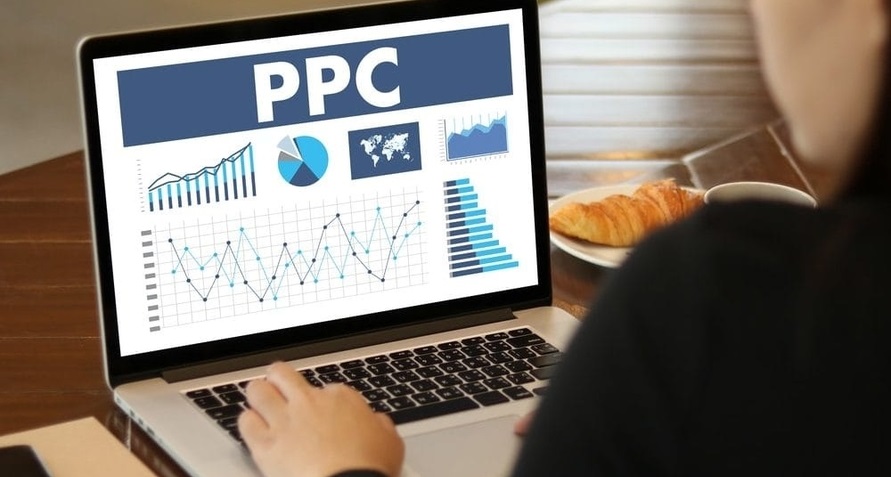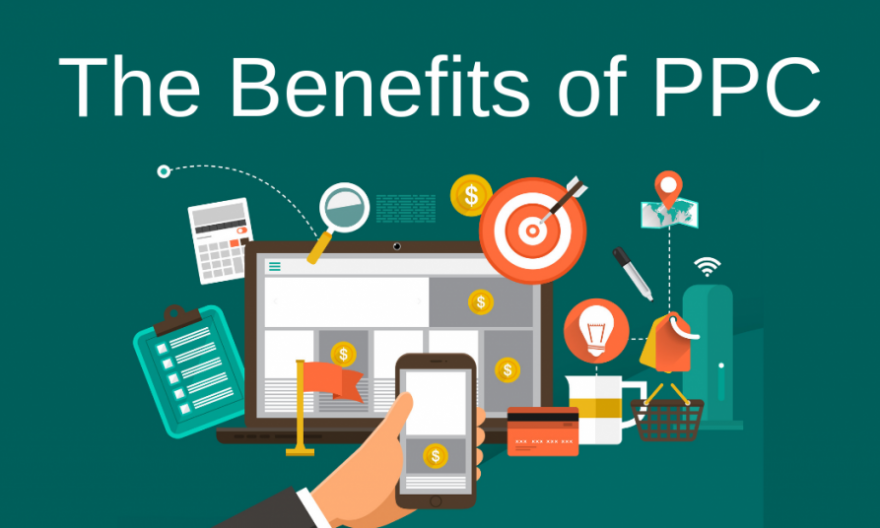In the ever-evolving world of digital marketing, Pay-Per-Click (PPC) advertising stands out as one of the most effective strategies to drive traffic, generate leads, and increase sales. But what exactly is PPC, and how can businesses leverage it to their advantage? This comprehensive guide will delve into the basics of PPC marketing, exploring key concepts, strategies, and best practices to help you get started with an effective PPC advertising strategy.
What is PPC?
Pay-Per-Click (PPC) is an online advertising model where advertisers pay a fee each time one of their ads is clicked. Essentially, it’s a way of buying visits to your site, rather than attempting to earn those visits organically. Search engines like Google and Bing, as well as social media platforms like Facebook and LinkedIn, offer PPC advertising opportunities.

Key Components of PPC Advertising
Understanding the key components of PPC advertising is crucial for crafting an effective strategy. Here are the main elements:
1. Keywords
Keywords are the foundation of PPC campaigns. These are the terms or phrases that users type into search engines when looking for information, products, or services. Successful PPC campaigns rely on thorough keyword research to identify high-intent keywords that are relevant to your business.
2. Ad Copy
Ad copy is the text that appears in your PPC ads. It should be compelling, relevant, and include a strong call-to-action (CTA) to encourage users to click on your ad. Effective ad copy can significantly impact the click-through rate (CTR) of your ads.
3. Landing Pages
A landing page is the web page users are directed to after clicking on your ad. It should be closely aligned with the ad copy and offer a seamless user experience. The goal of the landing page is to convert visitors into leads or customers.
4. Bidding
PPC advertising operates on a bidding system. Advertisers set a maximum bid, which is the highest amount they are willing to pay for a click on their ad. The actual cost per click (CPC) is determined by an auction process that takes into account factors like bid amount, ad relevance, and quality score.
5. Quality Score
Quality Score is a metric used by search engines like Google to evaluate the relevance and quality of your PPC ads and landing pages. A higher Quality Score can lead to lower CPCs and better ad positions. It is influenced by factors such as CTR, ad relevance, and landing page experience.
How Does PPC Advertising Work?
To understand how PPC advertising works, let’s break down the process step-by-step:
1. Keyword Research
The first step in any PPC campaign is keyword research. Use tools like Google Keyword Planner, SEMrush, or Ahrefs to identify relevant keywords for your business. Focus on high-intent keywords that are likely to attract users who are ready to take action.
2. Setting Up Ad Campaigns
Once you have your keywords, it’s time to set up your ad campaigns. This involves creating ad groups, writing ad copy, and designing landing pages. Organize your campaigns and ad groups based on themes or product categories to ensure your ads are highly relevant to the keywords.
3. Bidding and Budgeting
Set your maximum bid for each keyword and determine your daily or monthly budget for the campaign. Automated bidding strategies can help optimize your bids based on specific goals, such as maximizing conversions or targeting a specific CPA (Cost Per Acquisition).
4. Launching and Monitoring
Launch your PPC campaign and closely monitor its performance. Use analytics tools to track key metrics like CTR, conversion rate, and ROI. Regularly review and adjust your campaigns to improve performance and achieve your marketing goals.

PPC Advertising Strategies for Success
An effective PPC advertising strategy can help you achieve your business goals and maximize your ROI. Here are some essential strategies to consider:
1. Conduct Thorough Keyword Research
Keyword research is the foundation of a successful PPC campaign. Use keyword research tools to identify high-intent keywords that are relevant to your business. Consider the search volume, competition, and cost-per-click for each keyword to determine which ones to target.
2. Create Compelling Ad Copy
Your ad copy should be engaging, relevant, and include a strong call-to-action. Highlight the unique selling points (USPs) of your products or services and ensure your ads match the intent of the keywords. Test different variations of ad copy to see which performs best.
3. Optimize Landing Pages
A well-optimized landing page is critical for converting clicks into conversions. Ensure your landing pages are relevant to the ad copy and provide a seamless user experience. Include clear CTAs, contact forms, and persuasive content to encourage visitors to take action.
4. Use Negative Keywords
Negative keywords are terms you don’t want your ads to appear for. Adding negative keywords to your campaigns can help filter out irrelevant traffic and improve the quality of clicks. Regularly review your search term reports to identify and add negative keywords.
5. Implement Ad Extensions
Ad extensions provide additional information and can make your ads more compelling. Use extensions like site link extensions, call extensions, and location extensions to enhance your ads and provide users with more options to engage with your business.
6. Monitor and Adjust Bids
Regularly monitor your bids and adjust them based on performance. Increase bids for high-performing keywords and reduce bids for low-performing ones. Automated bidding strategies can also help optimize your bids based on specific goals.
7. Analyze and Optimize Performance
Use analytics tools to track the performance of your PPC campaigns. Analyze key metrics like CTR, conversion rate, and ROI to identify areas for improvement. Regularly optimize your campaigns based on performance data to achieve better results.

Benefits of PPC Advertising
PPC advertising offers several benefits for businesses looking to drive traffic, generate leads, and increase sales. Here are some of the key advantages:
1. Immediate Results
Unlike organic search, which can take time to build momentum, PPC advertising can deliver immediate results. Once your campaign is live, your ads can start appearing in search results and driving traffic to your website.
2. Highly Targeted
PPC allows you to target specific keywords, demographics, locations, and devices. This level of targeting ensures your ads reach the right audience at the right time, increasing the likelihood of conversions.
3. Measurable ROI
PPC advertising provides measurable results. You can track key metrics like clicks, impressions, conversions, and ROI to see how your campaigns are performing. This data allows you to make informed decisions and optimize your campaigns for better results.
4. Cost Control
With PPC, you have complete control over your budget. You can set daily or monthly budgets and adjust bids based on performance. This flexibility allows you to manage your advertising costs effectively and maximize your ROI.
5. Enhanced Brand Visibility
PPC ads appear at the top of search results, giving your brand prominent visibility. Even if users don’t click on your ads, seeing your brand name at the top of search results can increase brand awareness and credibility.
Common PPC Advertising Mistakes to Avoid
While PPC advertising can be highly effective, it’s important to avoid common mistakes that can hinder your success. Here are some pitfalls to watch out for:
1. Neglecting Keyword Research
Skipping thorough keyword research can result in targeting irrelevant keywords and wasting your budget. Invest time in identifying high-intent keywords that are relevant to your business.
2. Ignoring Negative Keywords
Failing to use negative keywords can lead to irrelevant clicks and wasted spend. Regularly review your search term reports and add negative keywords to filter out unwanted traffic.
3. Poorly Written Ad Copy
Ad copy that is not compelling or relevant can result in low CTRs and poor performance. Write engaging ad copy that highlights your USPs and includes a strong CTA.
4. Unoptimized Landing Pages
A poorly designed landing page can lead to high bounce rates and low conversion rates. Ensure your landing pages are relevant to the ad copy and provide a seamless user experience.
5. Lack of Performance Monitoring
Failing to monitor and analyze your PPC campaigns can result in missed opportunities for optimization. Regularly review your campaign performance and make data-driven adjustments to improve results.
Conclusion
PPC advertising is a powerful tool for businesses looking to drive traffic, generate leads, and increase sales. By understanding the basics of PPC and implementing effective strategies, you can achieve significant results and maximize your ROI. Whether you choose to manage your PPC campaigns in-house or partner with a PPC campaign management company like Nucleo Analytics, following the steps outlined in this guide will set you on the path to success.
For those seeking expert assistance, consider reaching out to a reputable PPC campaign management company to help you navigate the complexities of PPC advertising and achieve the best possible outcomes for your business











